As I said before, the most interesting thing about the Alpha 7 is its short flange focal distance (FFD, more information here),
it's 18mm only. So there is plenty of room for adapters. FFD for Leica
screw mount (often named M39) is 28.8mm, the other more common FFDs go
from 40.5mm for Konica AR, 42mm (old canon FD/FL), 44mm for Canon EOS and Sigma, 45.46mm for
the famous M42 screw mount to 46mm Olympus and 46.5mm Nikon F (more
information here).
There
are adapters available for most of the common mounts, in my opinion,
for a try, some cheap one would do. An adapter with contacts for Canon
is more expensive, check, whether the adapter is for full frame and be prepared:
autofocus will be slow or simply not working. The most expensive adapters are the Sony LA-EA3
and the LA-EA4, the first without autofocus, the second has its own
autofocus built into the adapter, hence its size. If you own Sony or
Konica/Minolta A mount lenses, the investment is reasonable, seen the
prices of full format E mount (FE) lenses.
A
warning for the Canon adapters with contacts: they work fine with
original Canon lenses. It may not be the same for third party lenses
with Canon mounts. I have tried several older Sigma Canon mount lenses that
do not close
the aperture. Such a lens works fully open, but when you close the
aperture
on your Sony, the camera thinks you did, but the lens didn't, so photos
are overexposed. Autofocus works, but is slow. Rumours say that Sigma hadn't
access to the full Canon lens protocol. I have tried two more adapters
with the same negative result. These Sigma lenses do not work at all with
Canon DSLR cameras, the camera gives an error message. Some lens
sellers "forget" to mention this. So ask the seller whether the lens works with a digital Canon.
Some information for Russian and other eastern lenses, including the adaption of M39 Zenit mount lenses, is on this page. You will find some hints for Braun Paxette lenses which have a similar problem on another page.
Here are some of my adapters:
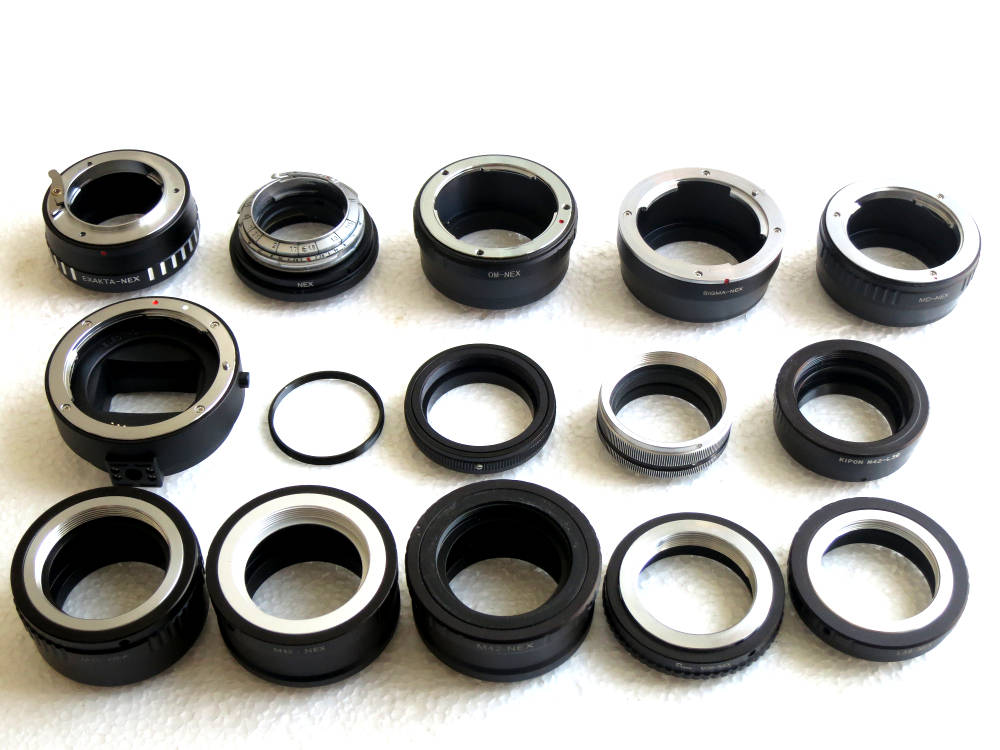
Front row: 3 different M42, 2 different Leica Screw Mount (LTM or M39, much smaller than the others due to the short FFD).
Middle row: Canon EOS with contacts, M39 to M42 ring, T2 Adaptall to M42, 2 different M39 to M42.
Last row: Exakta, Contax RF (Kiev), Olympus OM, Sigma, Minolta MD.
The
3 M42 adapters in the first row have all slightly different FFD
sizes, the middle one is about standard length, the left one is a bit
longer and the right one is about 0.3mm shorter, hence perfect for M39
Zenith adaption (see Russian lens page). The 2 M39 adapters are also differently made, the left one has a slightly protruding ring. This could be an advantage for Zeiss or Russian collapsible lenses. They have a tiny knob,
that has to be pushed in to set the lens to infinity and lock it
there. If this knob touches the adapter, you
might have to cut out a little "groove" for the base of the tiny knob. With a protruding ring you have just to file
off a weeny bit of the base of the knob.
The
Contax RF or Kiev RF Mount adapter is a bit difficult to find, but
there are skilled people who make them in Russia and other Eastern
countries. Contax
mount is quite different. In fact it's two mounts. The inner mount has
a focussing helical, so the standard lenses don't have one. The outer
mount is for other lenses which have their own focussing device. The
difference in price between a famous old M39 mount lens and its Contax
mount variant is sometimes huge. If you want more than one of these
lenses, think about buying this type of adapter.
In theory the adapters should fit perfectly. Which indeed is the case for all my adapters except M39 and M42. These
two
adapters are adjustable, there are 3 screws which hold the ring with
its M42 or M39 thread. In the first place this lets you turn the
screwed-in
lens to shift the reading marks towards the top. Just loosen the screws
a little bit and adjust. Do this with your camera lying on its back,
otherwise the ring and the lens could fall out. Rescrew. Check whether you can focus to infinity (~15m is not infinity!), the lens being widest open.
If
infinity focus is somewhat before reaching the ∞ mark,
there is a little problem with the lens or with your adapter. In any
case it should be not too far from the infinity mark, otherwise there
is something basically wrong. Set the lens to infinity, and remember it
should be wide open. Point your camera to a far away object, look
through the finder and unscrew the lens cautiously. Do not make
more than 1-2 turns an hold the lens, otherwise the lens might fall
down. If you can focus to infinity now, you have to adjust the ring. You now have a
tiny gap between the lens and the adapter. Try to find shims which are
exacly the size of the gap. Unscrew the lens and take the adapter off.
Unscrew the threaded ring from the adapter, before doing so, make a
little stroke with a pencil to mark the position of the ring within the
adapter. Now you should have this:
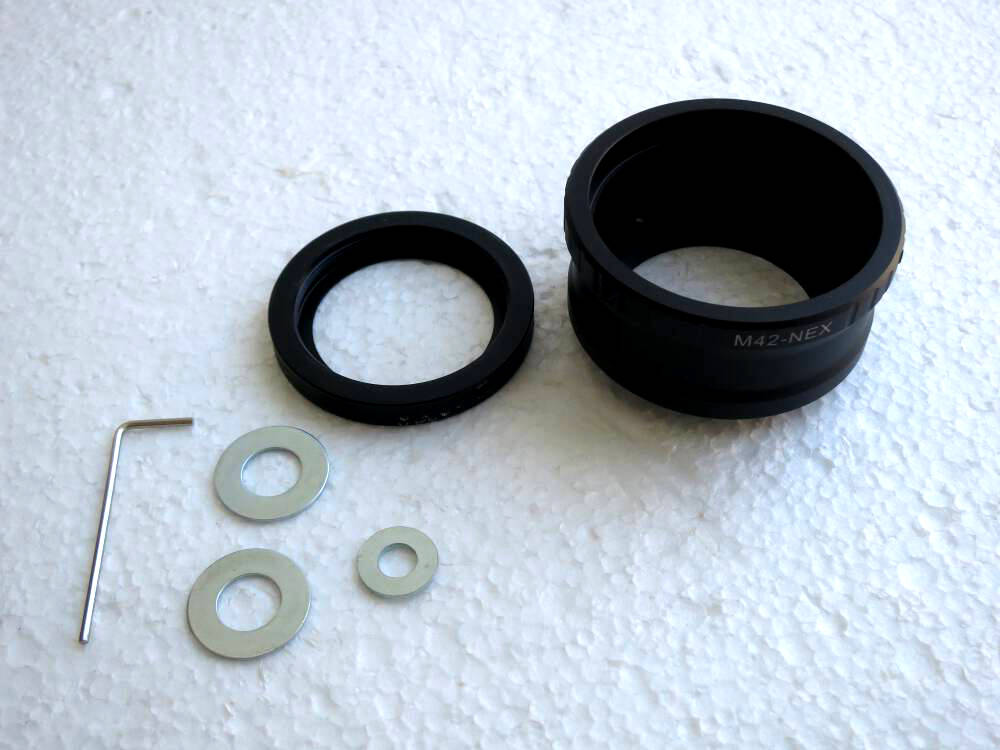
Threaded ring unscrewed, shims.
Put your shims between the adapter and the threaded ring, it should look like this:
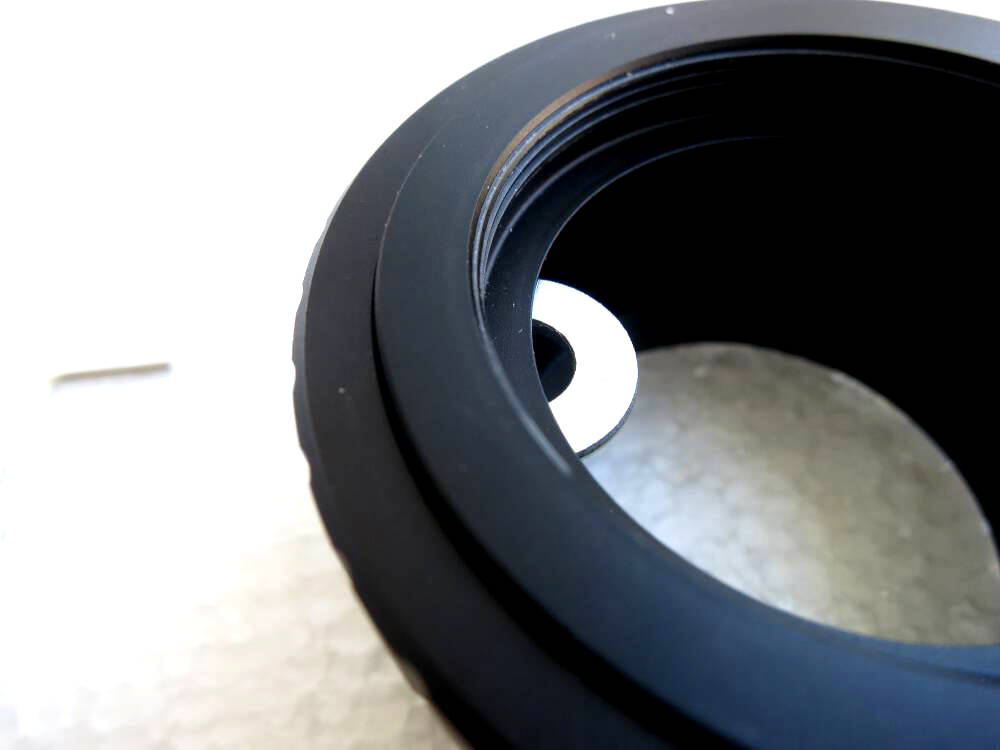
You should put 3 shims to have an even gap. It needs some patience.
Rescrew
the ring, look also for the right position according to your little
pencil mark. Pull the shims out and tighten the screws again. Put
everything together, focus should be fine now.
It's a good idea
to buy an adapter for each screw mount lens you want to use more often.
Swapping lenses is much easier and quicker as well. And the Sony rear
caps are easier to handle.
If you can't reach
infinity, i.e. infinity focus seems to be a little bit beyond the ∞ mark, it becomes more complicated, you have to sand down the ring. Please refer to the Russian lens page or for the Braun Paxette lenses to this page.
One last odd, but interesting adapter that I came across, buying lenses: the Enna Sockel
(socket), a system which was built between 1958 and 1967. It was mainly
made for the Exakta mount, but a M42 mount was available as well. The
socket contains all the mechanics, the lens insert is a lens only which
is much cheaper to make. So you buy a socket once and then different
lens inserts for less money. In those days a good lens was easily the
equivalent of a month's salary or even two. The system was widely
exported. In 1964 they changed the system from manual aperture to
automatic and added a range of other mount sockets. The 2 system
variants are not compatible! There is a wonderful German page which
contains exhaustive information here. Cheap lenses from Japan made the Enna Sockel obsolete. This is what it looks like:
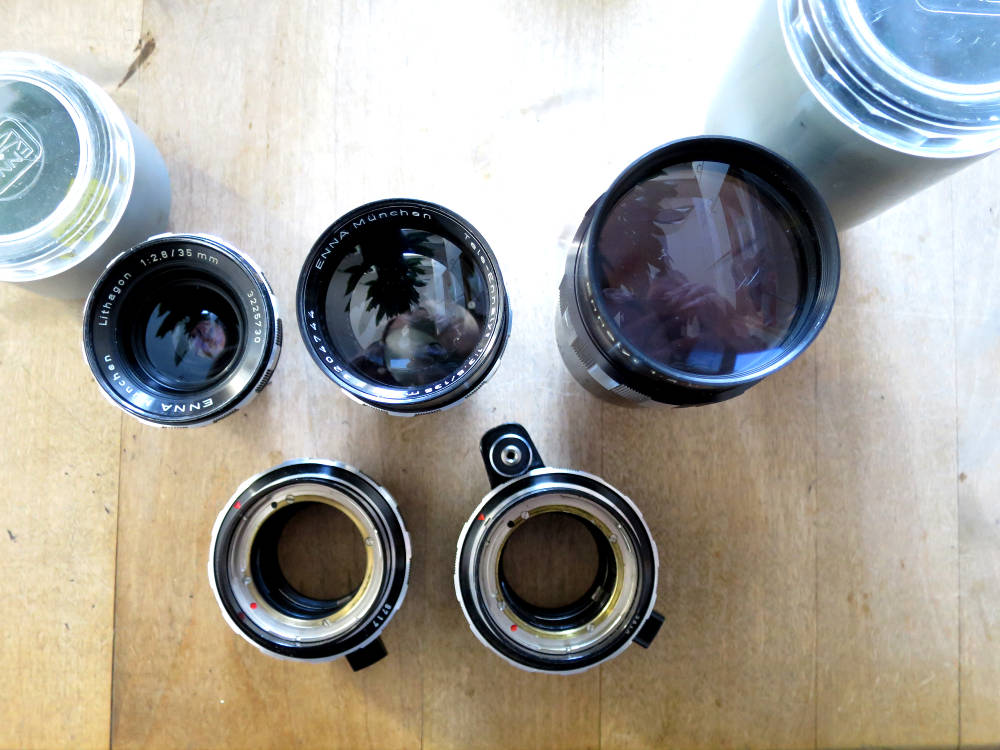
3 typical lens inserts and the 2 earlier mounts.
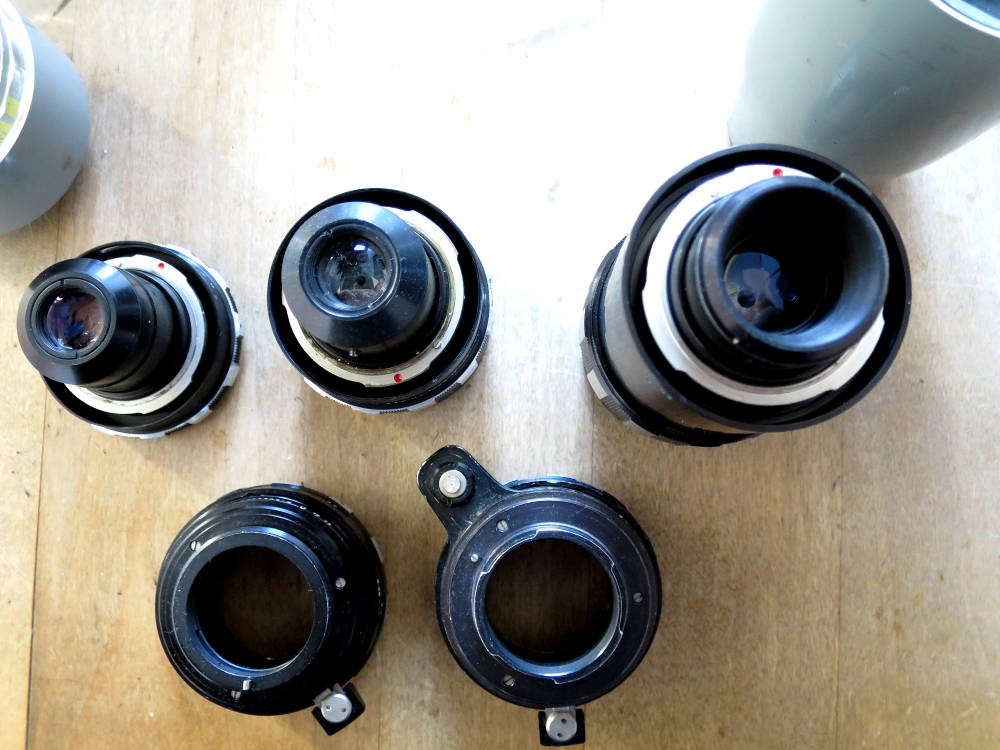
Rear
view. To protect the back part of the lenses, the inserts were screwed
via the filter thread into the lid of a plastic container.

